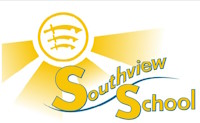Communication
Communication at Southview
At Southview School, our communication curriculum, like our physical one, underpins everything we do and is woven in, throughout school day. Our dedicated class teachers, communication team and Speech and Language therapist’s work together to ensure every child has the desire and means to communicate. This page has been designed to offer an over-view of how communication is taught and delivered at Southview.
Communication in Practice
Communication at Southview is embedded in our practise, across our whole curriculum and school day, including dedicated EHCP targets to set next steps in learning and measure progress. Our dedicated Communication Team works under the direction of the class teacher to deliver sessions, both in a group and on a 1:1 basis. Our communication curriculum is broken down into the following three strands, to ensure each aspect of communication is overtly taught:
- Skills Practice – this is the practising of skills unique to the individual student needed for them to communicate, for example, using a communication book.
- Social Communication – this is the practising of communication, language and social skills needed to appropriately interact with others, for example turn-taking in conversations.
- Functional Communication – this is the practising of communication needed for use in the community, such as the visiting of the local shops.
Total Communication
At Southview School we pride ourselves on using a Total Communication Approach, meaning not one communication method is valued over another. We are led-by our students, every method of communication is valued if it works! This includes, but not limited to; verbal language, the written word, Makaton signing, symbols, on-body cues, objects of reference, facial expressions and hi and low-tech devices.
What is AAC?
Augmentative and alternative communication (AAC) is the collective term used for a vast range of techniques that support or substitute spoken communication. These techniques include signing, gestures, communication boards, symbols and Voice Output Communication Aids (VOCAs).
AAC also includes low and high-tech aids. Low-tech AAC comprises of communication aids that require no power, such as communication books and mats. These are tailor made for our student’s ability and personal preference. High-tech devices are those which are battery operated, including direct-access (for example, touching the screen with a finger), eye-gaze, switch work or a joystick.
Makaton
Makaton is a language programme that combines signs, symbols and speech to aid communication. At Southview, Makaton is woven into all our children’s communication from the very start in our EYFS hub, starting with more and stop.
Symbols
Symbols are part of our comprehensive use of AAC and a visual representation of a word. At Southview we use them across the school to aid children’s communication by supporting the spoken and written language as well as giving children a way to express wants, needs, thoughts, emotions and opinions.
Objects of Reference
Objects of reference are objects which have meaning assigned to them. They stand for something in much the same way as words do, whether spoken, signed or written. Objects of reference can represent activities, places or people. They are used in aiding memory, understanding and to enable anticipation of events.
On-body cues
On-body cues or touch cues are a physical prompt, used alongside spoken language, to alert the student to what is going on around them and to aid transition when moving from one activity to the next. These are often used for those children who may have a range of more complex needs, including sensory.
Sensory Journeys/Stories
Sensory journeys and stories are immersive experiences that use a multi-sensory approach using the same resources, in the same order, building early communication skills, attention and engagement.
TACPAC
TACPAC (touch and communication programme) is a sensory communication resource that combines touch and music during a structured, 1:1 session.
Intensive Interaction
Intensive interaction is an approach used to develop early communication skills through waiting, observing and being led by what the child/student chooses to play and interact with. During Intensive Interaction sessions, the adult imitates the child’s movements and vocalisations to develop fundamental communication skills, such as turn taking, eye contact and sharing of personal space.
For more information please don’t hesitate to contact our Communication Link Teacher
Carly Dolden– carlyd@southview.essex.sch.uk
|
|
